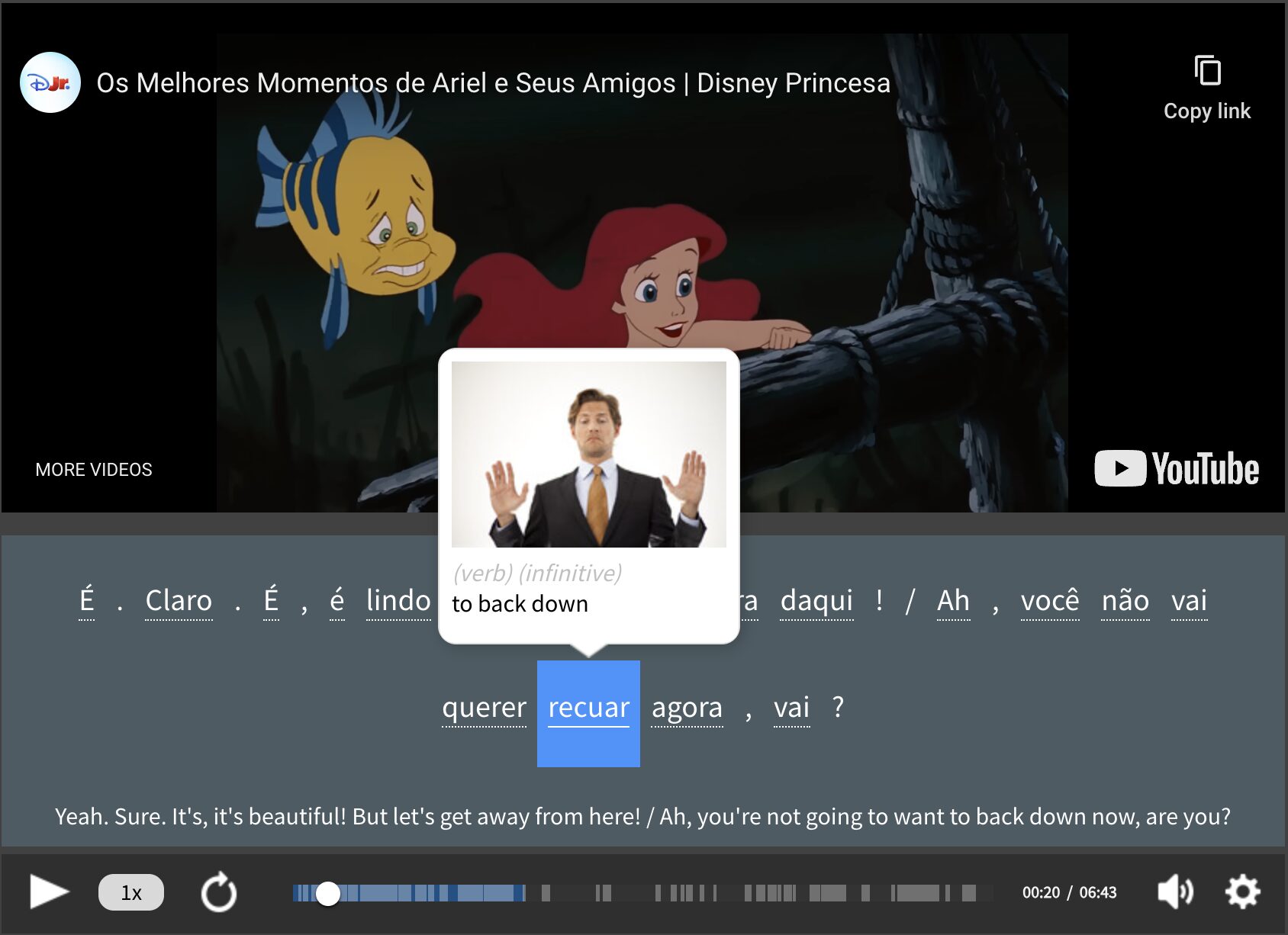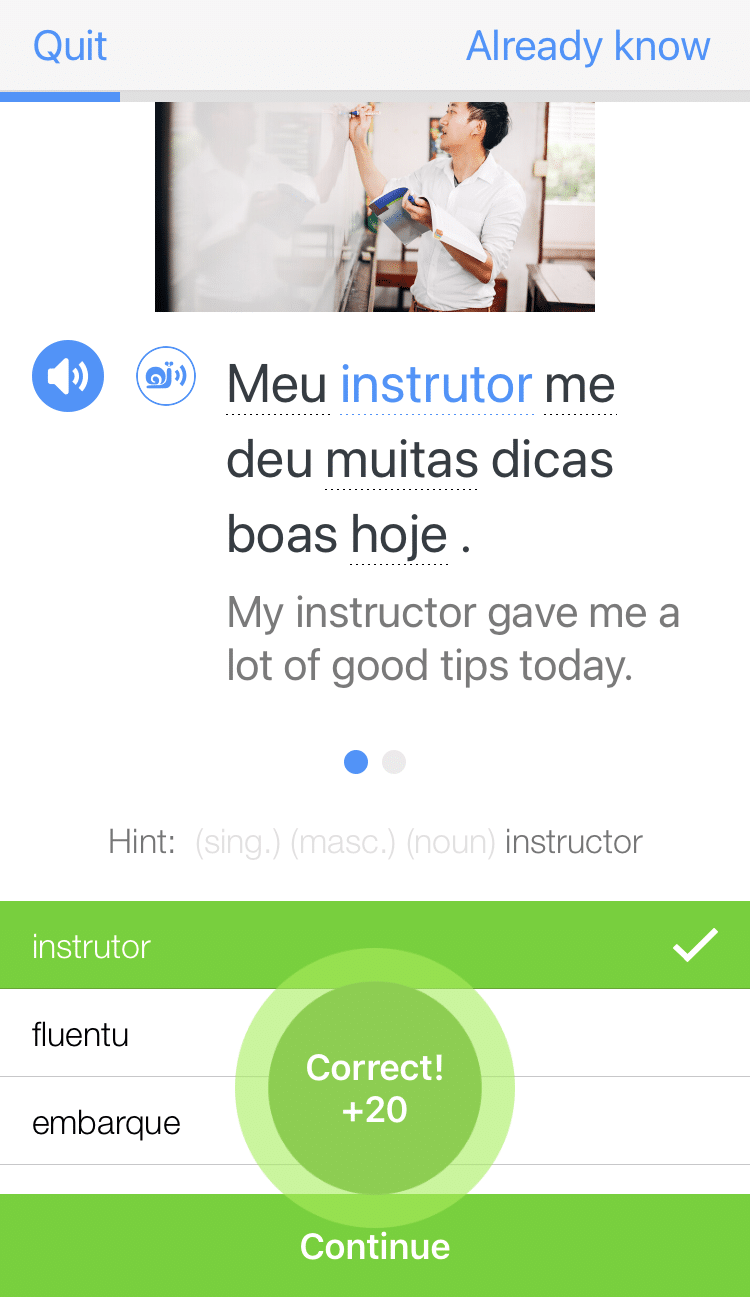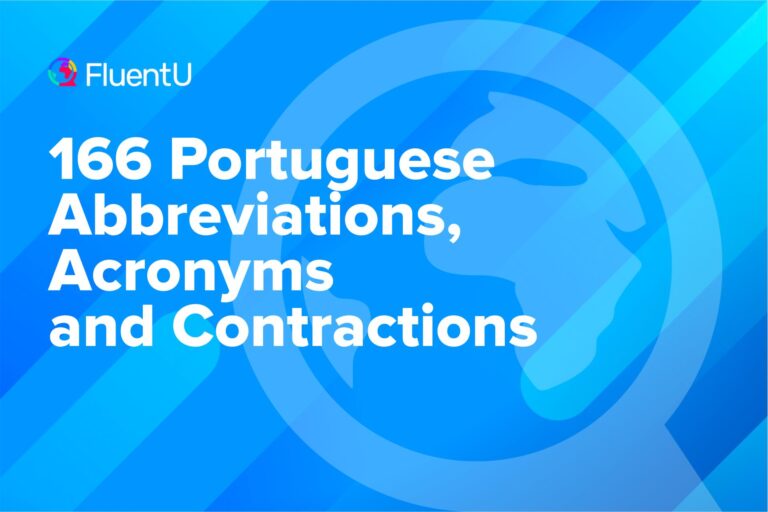Improve Your Portuguese Listening Skills with 5 Effective Practice Methods
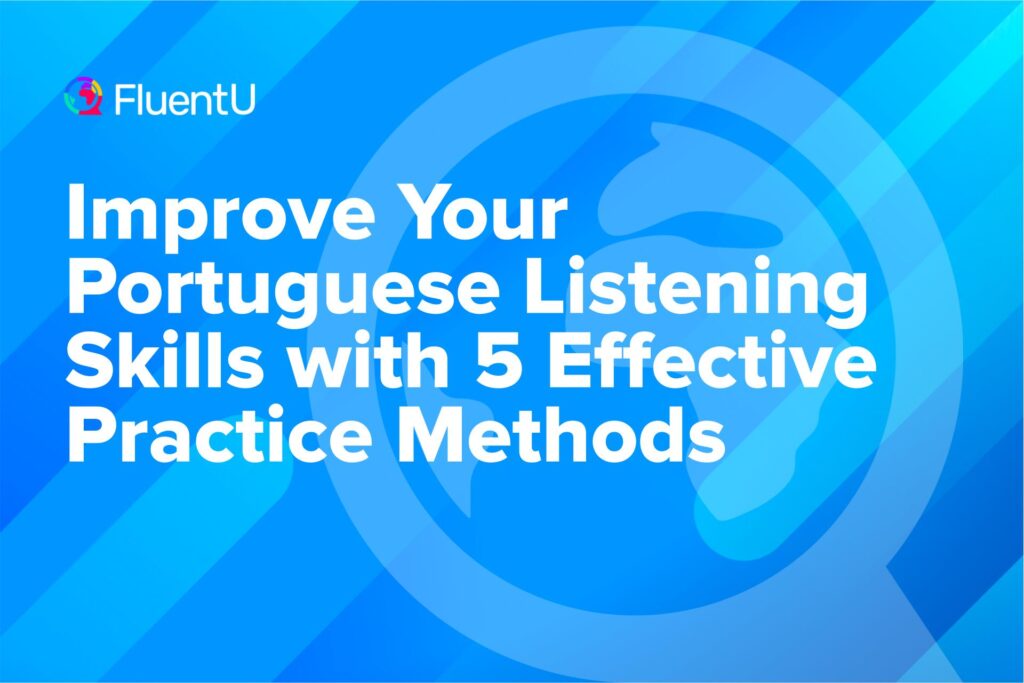
Listening is an essential skill in learning a new language. But practicing your listening skills can actually be enjoyable with the right strategies and tools.
I’ve laid out five methods to improve your Portuguese listening and make your practice time more effective. I’ve also included plenty of online resources to help you put these listening hacks to good use.
Download: This blog post is available as a convenient and portable PDF that you can take anywhere. Click here to get a copy. (Download)
1. Give Yourself Specific Tasks
Giving yourself specific assignments for your listening practice will force you to practice active listening. The listening experience is much more productive when you’re looking for specific information such as context, names, details or even specific words.
It’s important to determine the exact tasks or questions before you begin listening. You can easily find relevant tasks for audio, but sometimes you’ll need to assign your own tasks beforehand.
For example, you might decide to find out about a conversation partner’s family, job or hobbies. If you’re listening to a podcast, you might task yourself with summarizing the information after you finish listening or finding a few examples of adjectives in use.
Resources:
- Practice Portuguese: This site features real, authentic speech, infused with slang and colloquial expressions. It offers some free European Portuguese podcasts, but the premium upgrade will get you video subtitles, a transcript of each episode, a list of all the essential words and expressions and a quiz to test your listening comprehension.
- FluentU: This immersive program allows you to learn Portuguese as it’s spoken by native speakers, offering Portuguese media clips with tools to make it approachable for all learners.
FluentU takes authentic videos—like music videos, movie trailers, news and inspiring talks—and turns them into personalized language learning lessons.
You can try FluentU for free for 2 weeks. Click here to check out the website or download the iOS app or Android app.
The interactive subtitles, vocabulary lists and customizable flashcard decks will help you learn actively while watching your favorite videos. Here’s an example of how you can learn actively from shows like “Friends” with subtitles:
2. Practice Intensive Listening
This technique takes active listening to a whole new level by turning any audio into a full language lesson. Here’s how to use intensive listening to improve your Portuguese listening skills:
- First, find a bit of audio around 40 or 50 seconds which includes a transcript or accurate, word-for-word subtitles. Give it a full listen, then write down what you think was discussed in a short summary.
- Then, listen again and try to transcribe the audio without looking at the subtitles. There will be a lot of pausing and rewinding, and you might find it pretty time-consuming and rather tedious but it will pay off.
- Once you’re done, check the actual transcript and compare your work. Make any necessary corrections and jot down new words. Now, rewrite your summary, considering the details you may have omitted before. If possible, have a native speaker correct your summary.
Try to practice intensive listening this way a few times a week. It’s particularly efficient to do with episodes of the same show or podcast since you’ll get used to the speakers’ voices. Time yourself every time you do a transcription, so you can watch how much better you get at this the more you do it!
Resources:
- italki: This is a great place to hire a private Portuguese tutor at a super affordable hourly rate who can help you make corrections to your summary and discover new words or phrases to use.
- “Say It in Portuguese”: Every episode of this podcast features a Portuguese proverb or idiomatic expression discussed between two native speakers. A helpful transcript is available for each episode.
- Rhino Spike: If you can’t find audio that works for you, just track down a piece of Portuguese writing that you like and try submitting it to Rhino Spike, where a native speaker will record audio of it for you.
3. Give Extensive Learning a Go, Too
Extensive listening basically consists of absorbing as much authentic spoken language as possible. It’s more relaxed than intensive listening since you aren’t constricted by preset tasks or questions.
The objectives of extensive listening are to:
- Increase your ability to quickly recognize spoken Portuguese words.
- Build connections between written and spoken Portuguese.
- Help you tune into intonation and accents.
- Experience the pleasure of listening to Portuguese, which is instrumental in your motivation to learn its mechanisms.
The best way to do this is to surround yourself with native speakers. Since that may not always be achievable, you can do it with longer materials that suit your level and interests, like a good show or a playlist of Portuguese songs.
Take your extensive listening practice with you wherever you go, integrating it into your routine so you can do it regularly. For example, listen while you wash the dishes or commute to work.
Resources:
- Portuguese radio stations: Check out RTP TV and Radio, which comes directly from Portugal and offers an eclectic selection of stations you can listen to live. Radio Florida Brazil has a bit of everything, from music to sports to health and fitness.
- Portuguese podcasts: If you’re interested in travel, “Mas você vai sozinha?”(“Wait, You Go Alone?”) is a great podcast to dive into. You can even choose the episodes based on places you’re interested in.
- Portuguese audiobooks: Audiobooks offer different levels of text, from children’s books to more advanced chapter books. Check out “Aesop’s Fables” for some classic tales you’ve probably heard before or “Alice in Wonderland” to learn some new vocabulary.
- TEDx Talks: TEDx Talks are easily accessible via YouTube and cover a wonderful array of speakers and topics. Just search the offerings for Portugal, Brazil or even a specific Portuguese-speaking city.
4. Slow Down
Going slowly in your Portuguese listening practice can help you process more information. During my first few months in Portugal, I often used the phrase “Fale mais devagar, se faz favor” (Speak more slowly, please). Luckily, people were understanding and kind enough to slow their speech down for me.
Asking people to slow down their speech allows you to listen more closely. You’ll hear every sound they make and a clearer enunciation. When people speak faster, they tend to skip over and leave out sounds here and there, or slur their words together.
Many people are very accommodating to language learners and will even repeat themselves for you, too—and repetition is key in learning new grammar patterns and vocabulary. When you’re listening to recorded speech, slowing it down is even easier than asking.
Resources:
- YouTube Playback Speed: Fortunately, YouTube videos have built-in speed control. In a meta twist, you can watch a YouTube video on how to slow down YouTube videos:
- Audacity: You can download Audacity for free and use it for various audio editing operations, including slowing down the speed or pitch of a recording. It may not be the most user-friendly option, but once you get the hang of it, it’s super useful.
- Amazing Slow Downer: For a simpler program, check out this option if you’re willing to pay for the computer and mobile versions (a trial and “lite” mobile versions are available, though!).
5. Listen to Music
Music has long been an ally to foreign language learners. You can increase your listening fluency by getting to know this cornerstone of any culture. And what could be more fun than training your ears to the sounds of bossa nova, fado or funaná?
Bear in mind that poetic license is often employed in song lyrics, so they don’t necessarily follow grammar and syntax norms. But that’s okay, because textbook Portuguese isn’t always practical in the real world, either.
By absorbing the language via music, you can ensure that your Portuguese will have some flavor to it.
Resources:
- Lyrics Training: This website automates intensive learning with songs. Just choose from a multitude of music videos in Brazilian and European Portuguese. While the video plays, you have to fill in missing words from the lyrics. There’s also a “Karaoke” mode, where you can sing along to your favorite Portuguese songs!
- Portuguese singers: Check out AnaVitória, a pop group that sings relaxing tunes that are quite easy to follow along with. Another option is Jorge & Mateus, a duo that sings serteneja, a type of upbeat Brazilian music. If you want some classic bossanova sounds, Maria Rita will provide you with all that and more.
Portuguese Listening Practice Tips
Along with the methods above, here are some tips to help you improve your Portuguese listening practice:
Personalize Your Listening
If you want to remember something, you need to learn the skill of association. You might be familiar with this if you’ve ever played an introduction game at the start of a new class or gathering. A similar tactic can be applied to listening.
In this case, personalizing the subject matter to what’s relevant to you can help you make associations. Think about how the topic fits into your life and try to choose audio about topics that interest you. Videos can also be useful because they help you associate the words you hear with the images you see.
Use Subtitles
If you’re a visual learner or you learn through reading, subtitles can be a useful way to get started. They’ll help you parse the various words you hear. Be wary of leaning too heavily on English subtitles, though, as this can cause you to pay less attention to the spoken language. If you can, use Portuguese subtitles with Portuguese audio.
You can find some movies on Netflix with Portuguese language and subtitle options. Practicing listening with videos is especially useful for learning how words are used in context and hearing the language the way native speakers use it in casual conversation.
Diversify Your Audio
It’s a good idea to listen to various types of audio and switch it up between simple monologues and more complex dialogues. While it’s tempting to just stick with simpler audio, easing yourself into the more complicated listening practice will help you slowly gain confidence and understanding.
You can find easier Portuguese listening practice audio by looking for clips from children’s cartoons and songs. Disney movies, for example, are great resources because the audio is very clear and the vocabulary is typically simpler. Then, slowly start challenging yourself by introducing more complex content.
These Portuguese listening practice tips and resources have made my ears friendlier with the language, and hopefully, they’ll do the same for you.
All that’s left to do is find a cozy seat and immerse yourself in the language!
Download: This blog post is available as a convenient and portable PDF that you can take anywhere. Click here to get a copy. (Download)
And One More Thing...
If you're like me and enjoy learning Portuguese through movies and other media, you should check out FluentU. With FluentU, you can turn any subtitled content on YouTube or Netflix into an engaging language lesson.
I also love that FluentU has a huge library of videos picked specifically for Portuguese learners. No more searching for good content—it's all in one place!
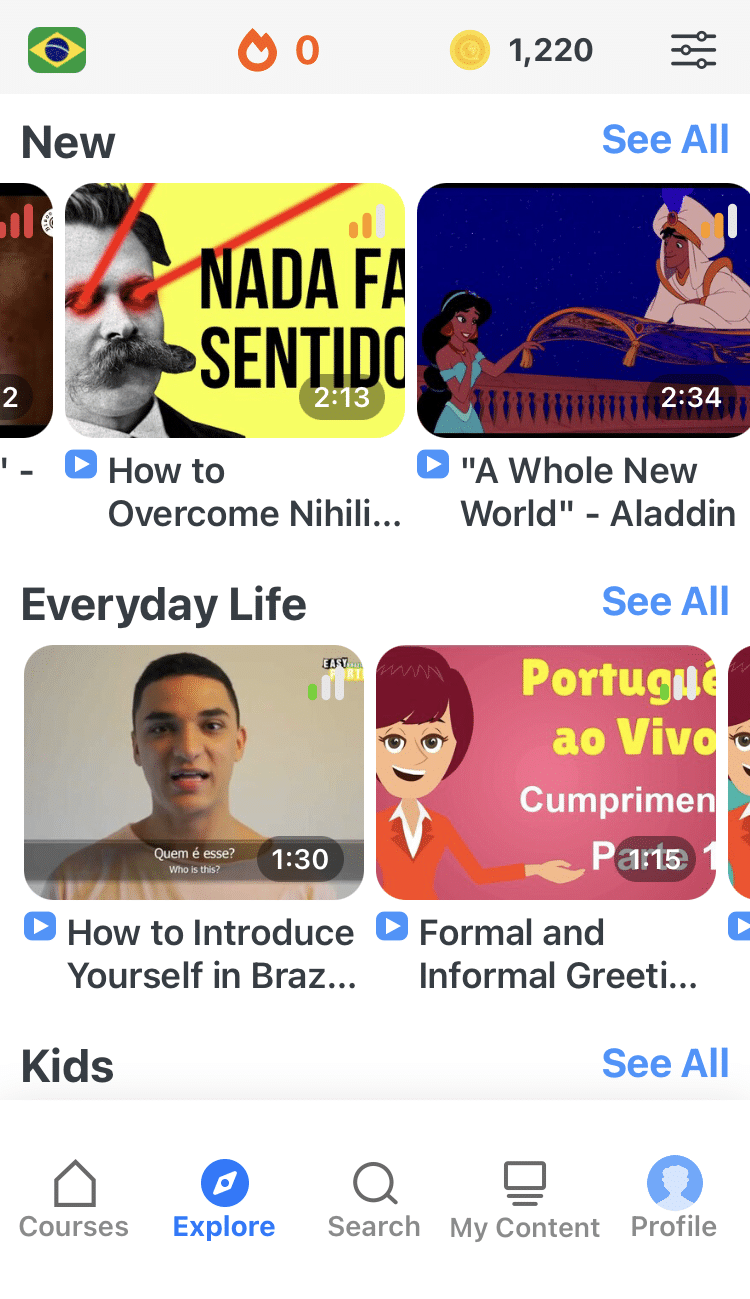
One of my favorite features is the interactive captions. You can tap on any word to see an image, definition, and examples, which makes it so much easier to understand and remember.
And if you're worried about forgetting new words, FluentU has you covered. You'll complete fun exercises to reinforce vocabulary and be reminded when it’s time to review, so you actually retain what you’ve learned.
You can use FluentU on your computer or tablet, or download the app from the App Store or Google Play. Click here to take advantage of our current sale! (Expires at the end of this month.)

